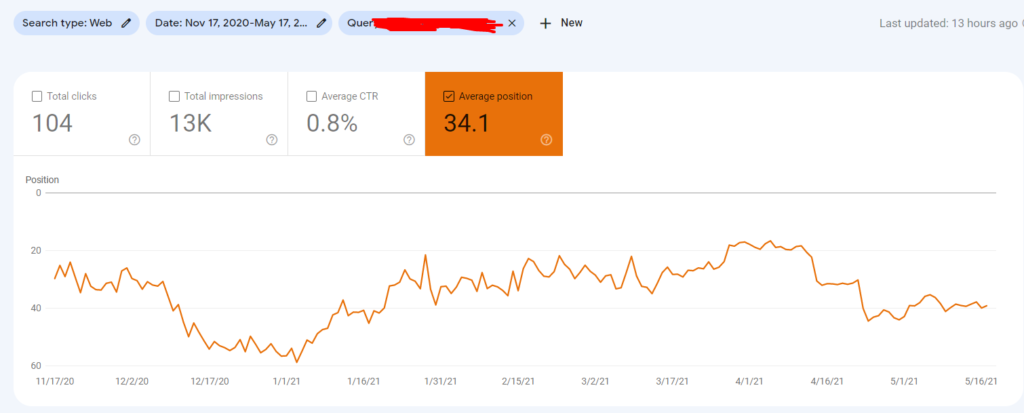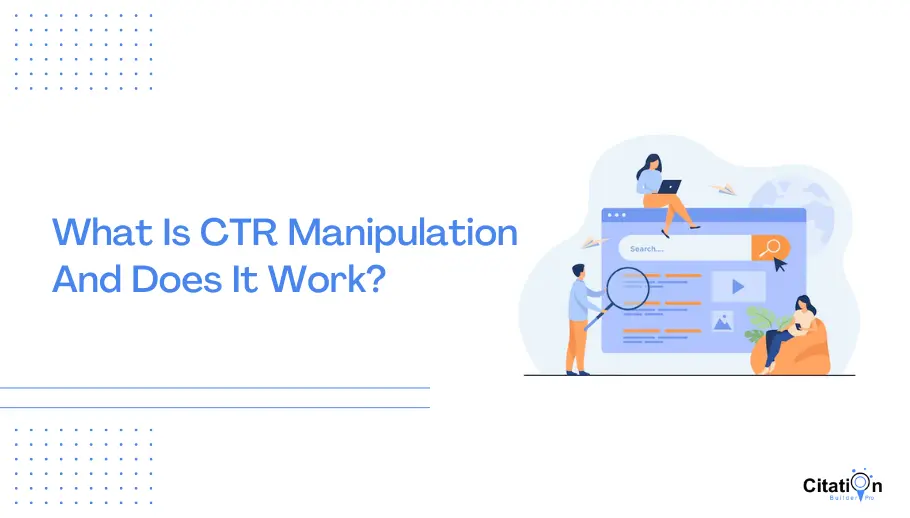Achieving Online Success With Strategic CTR Manipulation
In the digital landscape, achieving on-line success progressively hinges on the nuanced art of tactical click-through rate (CTR) manipulation. Discovering the delicate interaction of psychology, analytics, and imaginative execution exposes a pathway to not just boost CTR yet also cultivate enduring partnerships with audiences.

Recognizing Click-Through Fees
Understanding the ins and outs of click-through prices (CTR) is essential for online marketers aiming to optimize their electronic campaigns. CTR, specified as the ratio of customers who click a details web link to the variety of total individuals that check out a web page, ad, or email, functions as a crucial statistics in assessing the effectiveness of internet marketing techniques. A greater CTR shows that the web content reverberates well with the target market, prompting engagement and communication.
To determine CTR, the formula is simple: split the number of clicks by the number of impressions and increase by 100 to reveal it as a percentage. This dimension not just offers understanding right into the efficiency of ads but additionally discloses possibilities for enhancement. By analyzing CTR, marketers can determine which elements of their projects-- such as headings, images, or call-to-action switches-- are most reliable in driving clicks.
Furthermore, recognizing industry benchmarks for CTR is crucial, as they can vary considerably across various sectors. By constantly keeping an eye on and readjusting strategies based on CTR data, marketers can fine-tune their projects, boost customer involvement, and ultimately drive conversions, consequently contributing to the overall success of their digital marketing efforts.
The Psychology of Online Habits
The effectiveness of digital advertising and marketing methods mainly rests on the mental triggers that influence on the internet habits. Comprehending these triggers is necessary for crafting engaging content that resonates with customers and drives involvement. Secret mental principles, such as social proof, shortage, and necessity, play a considerable duty in forming customers' decisions.
Social proof, for instance, leverages the tendency of people to seek to others for guidance, making reviews and customer reviews powerful devices in persuading potential customers. Shortage techniques, which develop an understanding of restricted schedule, can force individuals to act quickly, fearing they might lose out on a chance. Seriousness infuses a feeling of immediacy, prompting customers to make quicker choices and minimizing the chance of procrastination.
Furthermore, the cognitive biases that affect online habits, such as anchoring and loss hostility, can be used to boost marketing efforts. By strategically positioning info and stressing prospective losses over gains, marketing professionals can dramatically affect consumer options. In a progressively competitive electronic landscape, understanding the complexities of on the internet actions psychology is important for accomplishing sustained success and maximizing click-through rates.
Techniques for Improving CTR
Improving click-through prices (CTR) is important for optimizing the effectiveness of electronic advertising and marketing projects. Including numbers, inquiries, or psychological triggers can substantially enhance interaction.
An additional reliable method is leveraging top notch visuals. Engaging images or video clips can attract users in, making them much more likely to click on the web link. Additionally, making use of A/B screening allows marketing experts to trying out various web content styles, establishing which versions produce the highest possible CTR.
Strategically positioning calls-to-action (CTAs) within your content is additionally vital. CTAs must be clear, influential, and positioned prominently to lead customers toward the wanted activity. Moreover, personalizing content based on customer habits and preferences can produce an extra appropriate experience, enhancing the probability of clicks.
Lastly, making sure that landing pages are maximized for click here for more mobile phones is important, as a significant portion of website traffic currently comes from smartphones. A smooth individual experience across all devices can substantially boost CTR and drive better outcomes for digital marketing initiatives. By executing these strategies, marketers can successfully improve their click-through prices.
Measuring and Assessing Your CTR
Gauging and analyzing click-through rates (CTR) is a vital part of examining the success of digital advertising campaigns. CTR, defined as the ratio of customers who click on a particular link to the overall number of users who see the web page, acts as a key performance sign. A thorough analysis begins with the aggregation of CTR data throughout various networks, consisting of email, social media sites, and paid ads.

Furthermore, tracking patterns over time is vital. A regular rise in CTR might suggest efficient approaches, while a decrease can signal the demand for immediate adjustments. Relative analysis with sector criteria additionally contextualizes performance, providing understandings right into necessary renovations.
Eventually, measuring and evaluating CTR not just notifies calculated decision-making however also fosters a society of continuous improvement in advertising and marketing efforts, guaranteeing that projects properly get to and resonate with target audiences. CTR Manipulation.
Honest Factors To Consider in CTR Control
As electronic advertising and marketing increasingly relies upon click-through prices (CTR) to assess effectiveness, honest factors to consider bordering CTR manipulation have involved the forefront. While maximizing CTR through critical techniques can improve exposure and interaction, it is crucial to examine the effects of such methods.
Adjusting CTR through misleading strategies, such as clickbait headings or misleading ads, can erode customer depend on and damage brand reputation. These techniques may produce short-term gains yet typically lead to long-lasting effects, consisting of client backlash and regulatory scrutiny (CTR Manipulation). Moral advertising and marketing highlights transparency, encouraging services to present precise info that straightens with customer expectations
In addition, the increase of man-made intelligence and automated click generation provides extra moral difficulties. Using crawlers or various other automated systems to blow up CTR undermines the stability of performance metrics and skews advertising and marketing information, making my blog complex decision-making procedures.
Ultimately, online marketers need to balance the quest of greater CTR with over here ethical requirements that focus on sincerity and consumer well-being. By cultivating authentic involvement and supplying value to customers, brand names can achieve sustainable success while promoting ethical advertising concepts. In navigating these considerations, companies will certainly not just secure their credibility yet additionally cultivate a devoted client base.
Verdict
In summary, accomplishing online success via strategic CTR adjustment needs a complex strategy that balances optimization strategies with moral considerations. Eventually, a dedication to moral requirements in CTR techniques not just improves efficiency but likewise cultivates enduring connections with audiences.